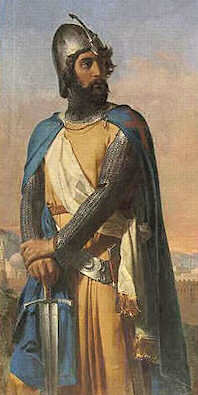Difference between revisions of "Farin I of Istan"
m |
|||
| Line 1: | Line 1: | ||
{{OOD}} | |||
{{Infobox royalty | {{Infobox royalty | ||
| name = Farin I | | name = Farin I | ||
| Line 79: | Line 80: | ||
===Farin I in Popular Culture=== | ===Farin I in Popular Culture=== | ||
[[Category:Istan | [[Category:Istan]] | ||
Latest revision as of 00:22, 1 February 2021
 | This article or section is out of date. A country/countries relevant to this article have been removed from Sahar and have been retconned. Not everything here may still be considered canonical. This article was last edited by Jute (talk | contribs) 3 years ago. (Update) |
| Farin I | |
|---|---|
| Viceroy of Istan | |
 19th Century depiction of Farin I | |
| Viceroy of Istan | |
| Reign | 1314-1336 |
| Successor | Farin II |
| King of the Northern Norjihanis Alongside Verin Lyventu | |
| Reign | 21 July 1314 - 12 November 1314 |
| Mayor of Reskav | |
| Reign | 1306-1336 |
| Predecessor | Merin VI |
| Successor | Merin VII |
| Born | 13 April 1289 Reskav, Norjihan |
| Died | 22 December 1336 (aged 47) Myski, Norjihan |
| Issue | Mahadras Jusin, Farin II of Istan, Merin VII of Reskav, Asr, Fynril, Ennear, Oisund |
| House | Jusin |
| Father | Merin VI, Mayor of Reskav |
| Mother | Fynril Eas |
Farin I (13 April 1289 - 22 December 1336), also known as Farin the Wise, Farin Leaðan (Farin the Guide) and Farin Rongal (Farin the Kingling) ruled as Mayor of Reskav, King of the Northern Norjihanis and the Viceroy of Istan, as well as holding partial control over the regions of Asmlar, Ladres and Ferdun, which later became the heartland of the Viceroyalty. Farin was the son of Merin VI, Mayor of Reskav, a minor noble in the court of the Bokkyn of Leas, who was forced to become politically active following the death of his father in 1306, when Farin was 17. He ended up being sent as a representative by the Bokkyn to the royal court at Hajenired where he met and impressed Govegz Rona, King of All Norjihanis. Farin later return to Reskav, where he remained as mayor until being offered the title of Duke of Istan by Govegz in 1314. Whilst Farin originally sided with Verin Lyventu in the Northern Rebellion that followed, being proclaimed King of the Northern Norjihanis alongside Verin, he later came to an agreement with Govegz and became Viceroy of a semi-independent Istani state.
Farin was seen as an energetic and dutiful ruler, driven to almost ruthless extremes by a desire to establish the independence of Istan as an entity, and his reign is characterised by attempts to cement his power both within its own borders but beyond via marriage, diplomacy and war. He remained loyal to Govegz for the first 15 years of his reign, helping control trade and trying to expand Norjihani influence in the Ishenar. However, as Govegz grew older and weaker, Farin took the opportunity to keep more of the revenues of the kingdom, and via the creation of a unique legal system based on Ekuosian models helped to weaken the Norjihani grip on Istan. He ended up in a number of border skirmishes with Norjihan, as well as in conflict with the Algazis and other states to the north.
King Farin himself is responsible for the construction of Myski, centered on a stylised mausoleum made to be a modern version of the Palace of Mahagrazh (this was later lost in a fire in 1706, and Farin I's body was never recovered; a copy of his sarcophagus can be found at the Grand Temple in Myski). He styled it partly on Palace City, which he had visited as part of a tour of Ekuosia in the 1320s, although the design remained distinctly Norjihani with everything revolving around the Grand Temple. The city itself wasn't completed in Farin's lifetime, and indeed his original plans were never fully finished as a result of the Great Rebellion of 1336. Fuelled by anger over his legal reforms, Gulla of Pom lead a rebellion against Farin's leadership. Although Farin was able to defeat it, both he and his eldest son Mahadras were killed in battle.